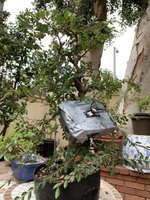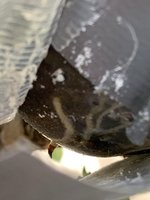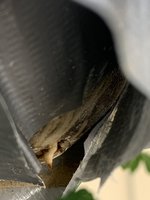How often to prune depends on the stag of development, species and your aims.
Young trees that need to grow and thicken are often only pruned once a year. Allow to grow long then cut back hard at the end of growing season to get changes of direction and taper. This can be repeated for a number of years until the trunk is thick and has good taper. Later in this stage pick out well placed shoots and wire for position to start branches for the bonsai.
Trees that are part developed - trunk is nearly as thick as required, branches are in the right places: Allow new shoots to extend 6" - 12" (depending on species and your aims) then cut back to 1 or 2 leaves. New shoots will grow from leaf axils. Allow those to grow to same length then trim again. You can do that several times in a season depending how healthy the tree is and species. This process builds ramification and will thicken branches a bit.
Well developed trees that have good trunk thickness and well ramified branches: trim new shoots when they are quite small - 1-3 sets of leaves. The aim is to prevent branches from getting too thick now. Trees can be trimmed (pinched) many times through growing season. Once a year, usually in winter when you can see structure easier, prune for form, direction, taper, to thin out overcrowded areas and to reduce branches over thickening.
That Chinese elm looks like it already has a good trunk. Presumably it also has well placed branches under all those leaves. It probably also has reasonable ramification. All that means it is in the final stage and you can trim new shoots much more often. i would have cut those shoots by now on my older Chinese elms.
Ginkgo are much slower growing. Even older trees often only need trimming once or twice a year.
Bald cypress don't ramify as fast as Chinese elm and will probably need less trimming too. BC is a species I am still trying to work out. You will get more expert advice from US growers.



